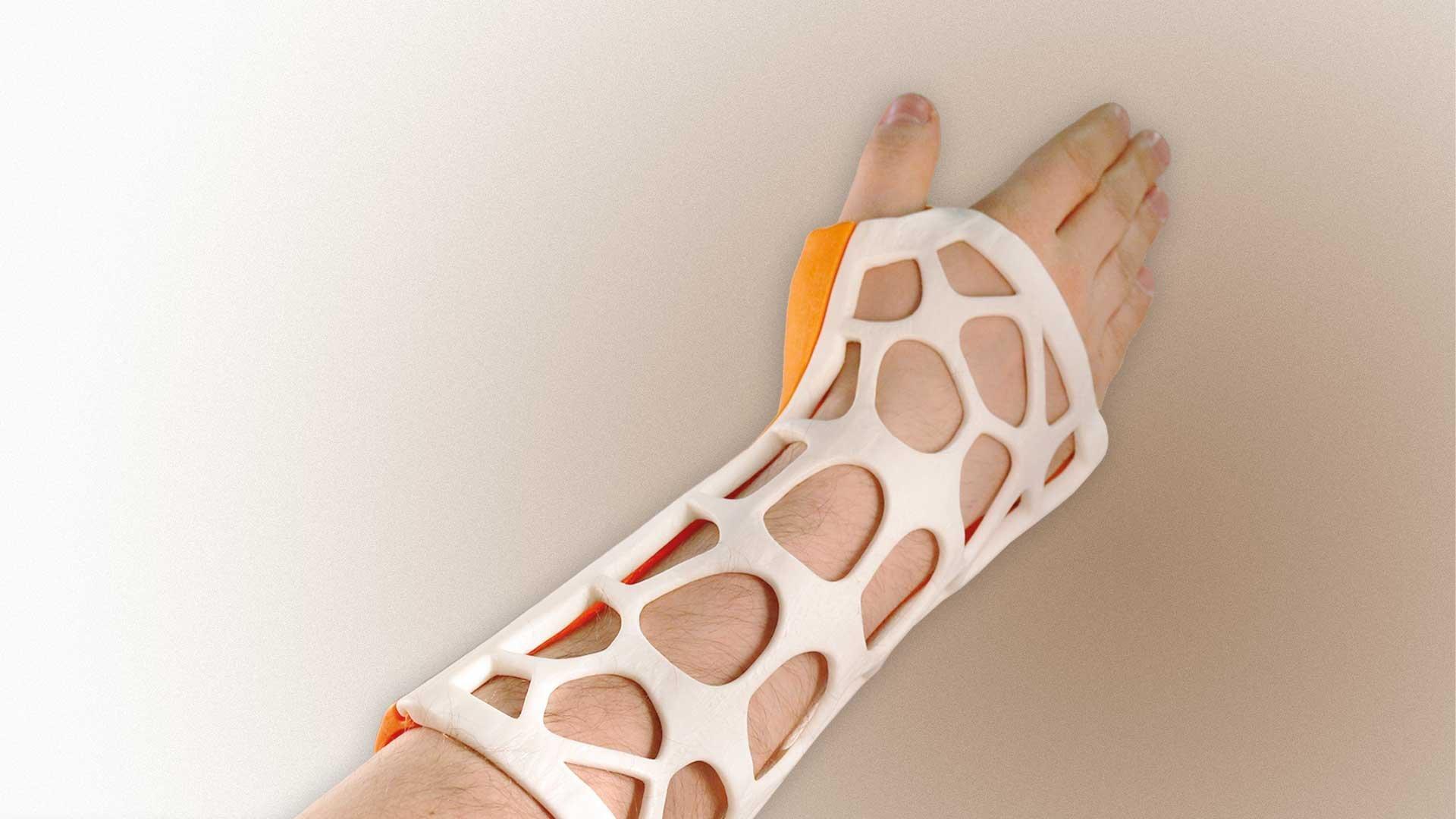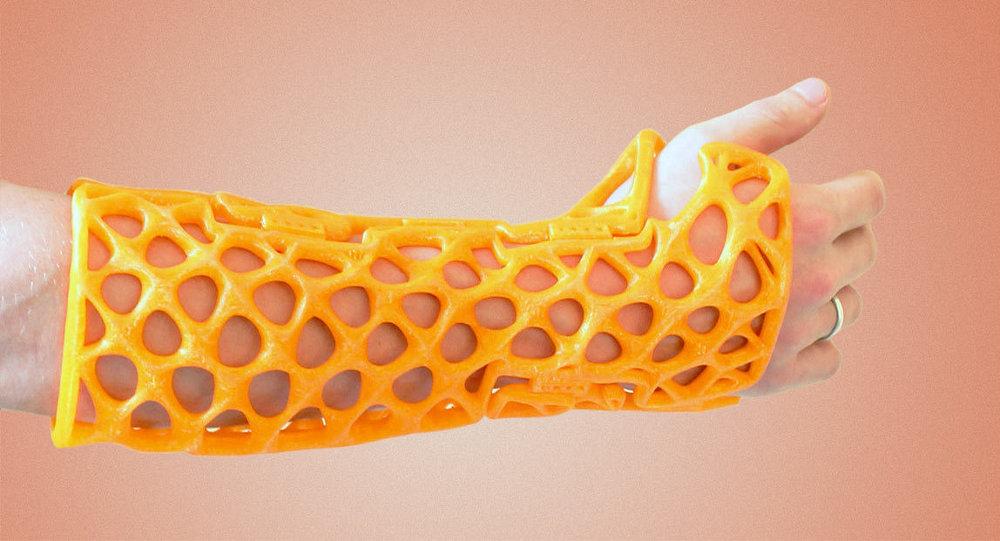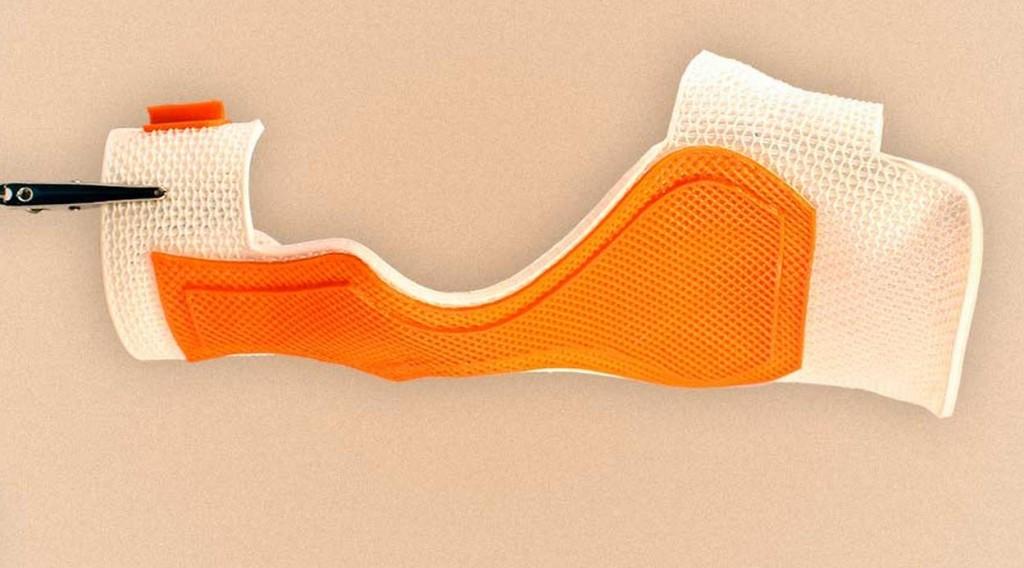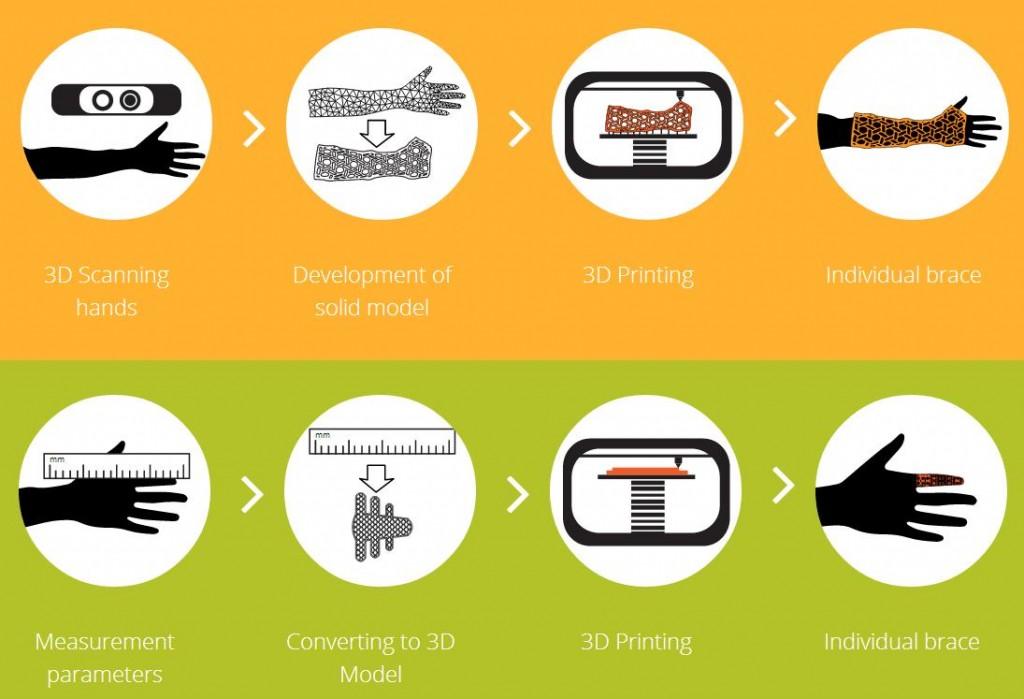 When it comes to medical uses for 3D printing, over the past couple years, the world has been introduced to a plethora of them. We’ve seen 3D printing used to aid surgeons in complicated surgeries by creating a tangible replica of the organ or bone that needs operating on. We have also seen it used to create custom prostheses which fit patients to a t. At the same time, the technology has been used in the creation of casts, with several companies and individuals trying their hand at replacing the traditional plaster-based casts that are used when someone breaks a bone, with a more modern 3D printed plastic version.
When it comes to medical uses for 3D printing, over the past couple years, the world has been introduced to a plethora of them. We’ve seen 3D printing used to aid surgeons in complicated surgeries by creating a tangible replica of the organ or bone that needs operating on. We have also seen it used to create custom prostheses which fit patients to a t. At the same time, the technology has been used in the creation of casts, with several companies and individuals trying their hand at replacing the traditional plaster-based casts that are used when someone breaks a bone, with a more modern 3D printed plastic version.
One Russian-based company, called Zdavprint, appears to see great potential in 3D printing casts. It’s not only them that sees the potential that this new technology could provide to the old tradition of setting, placing and holding a broken bone in place to heal. Maxfield Capital also realizes the potential, so much so that they have invested $100,000 into Zdravprint’s product and idea.
 There are many benefits to these new casts, which at this point in time can not totally replace the more conventional plaster-based versions. These modern-day casts are water friendly, so there is no longer a need to put a plastic bag over an arm, leg, finger, etc. while showering or bathing. Preliminary studies also show that bones are healing a lot faster with these new devices. Another great benefit that they provide is that because they are not permeable. This means that water and other liquids such as sweat won’t be absorbed, which have a tendency of causing horrendous smells in normal casts, but not with these 3D printed versions. At the same time, these casts are less restricting as far as movement goes, and much lighter in weight.
There are many benefits to these new casts, which at this point in time can not totally replace the more conventional plaster-based versions. These modern-day casts are water friendly, so there is no longer a need to put a plastic bag over an arm, leg, finger, etc. while showering or bathing. Preliminary studies also show that bones are healing a lot faster with these new devices. Another great benefit that they provide is that because they are not permeable. This means that water and other liquids such as sweat won’t be absorbed, which have a tendency of causing horrendous smells in normal casts, but not with these 3D printed versions. At the same time, these casts are less restricting as far as movement goes, and much lighter in weight.
So how exactly does a patient get fitted with one of these things? It’s really quite simple.
First a patient has his/her broken limb scanned by a special 3D scanner. It is then loaded into a computer where it can be tweaked before being 3D printed in a plastic material. Once the cast is 3D printed flat, heat is applied and the cast is then molded into the correct shape. 3D printing of the cast takes approximately 15-40 minutes depending on the size required and the subsequent forming takes another 3-5 minutes.
“ZDRAVPRINT is the first Russian company specializing in the creation of easy and convenient clips, and orthoses using 3D-printing,” said one doctor familiar with ZDRAVPRINT’s products. “ZDRAVPRINT products are the next generation of the immobilization of injured limbs, preserving comfort throughout the treatment period, and emphasizing the individuality of each patient.”
These casts, which are not just for broken bones but can be utilized as braces for bruises, sprains, dislocations, joint disease, age-related body changes, and post-operative recovery, also won’t cause rashes, ulcerations, and the terrible infections seen with more traditional casts.
One of ZDRAVPRINT’s founders, Fyodor Aptekarev tells Lenta.ru that he got inspiration for the design of the casts by fashion designer, Franci Bitonti, and his 3D printed dress. This, on top of the fact that Aptekarev has suffered numerous broken bones over the course of his life, drove him to try and come up with a better solution, one that could hopefully some day soon gain traction and replace the current out-dated methods being used today.
While this is a great solution to many of the current problems seen by cast wearers, the more traditional casts still must be worn for about a week after a break occurs. This is because these new casts don’t allow for the same wiggle room when it comes to adjusting and setting a patient’s bones.
Aptekarev believes it will take some time before there is a widespread adoption of these types of casts. He believes that it will be about 7 years before we really begin seeing doctors around the world utilizing 3D printing to create casts for their patients.
What do you think? Is this a future treatment for broken bones? Discuss in the 3D printed cast forum thread on 3DPB.com.
Subscribe to Our Email Newsletter
Stay up-to-date on all the latest news from the 3D printing industry and receive information and offers from third party vendors.
Print Services
Upload your 3D Models and get them printed quickly and efficiently.
You May Also Like
Making 3D Printing Personal: How Faraz Faruqi Is Rethinking Digital Design at MIT CSAIL
What if your 3D printer could think more like an intelligent assistant, able to reason through a design idea, ask questions, and deliver something that works exactly the way the...
Reinventing Reindustrialization: Why NAVWAR Project Manager Spencer Koroly Invented a Made-in-America 3D Printer
It has become virtually impossible to regularly follow additive manufacturing (AM) industry news and not stumble across the term “defense industrial base” (DIB), a concept encompassing all the many diverse...
Heating Up: 3D Systems’ Scott Green Discusses 3D Printing’s Potential in the Data Center Industry
The relentless rise of NVIDIA, the steadily increasing pledges of major private and public investments in national infrastructure projects around the world, and the general cultural obsession with AI have...
Formlabs Teams Up with DMG MORI in Japan
In late June, Nick Graham, Chief Revenue Officer at Formlabs, announced on LinkedIn that the company had partnered with DMG MORI, one of the world’s leading machine tool companies, to...




































